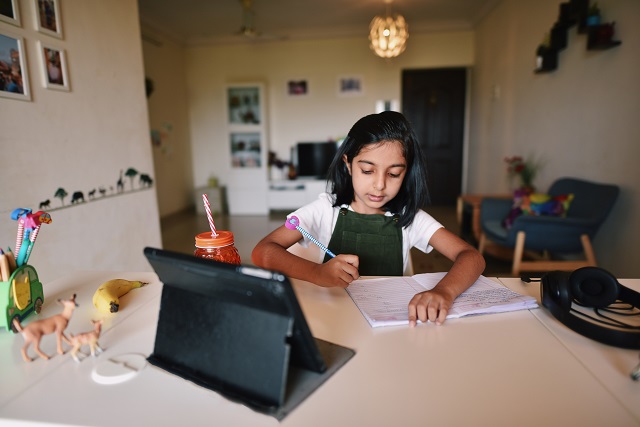
Credit: Mayur Kakade / Getty Images
This article was originally published November 6, 2020.
In the spring, more than 50 million K-12 students were hurriedly sent home as the nation’s public schools shut down because of the coronavirus pandemic. Some of those students have returned to their classrooms now, for full or partial in-person instruction, while others have continued with distance learning or quit public school systems altogether.
Paul Reville, a professor at the Harvard Graduate School of Education, and Pedro Noguera, dean of the University of Southern California Rossier School of Education discuss the changes afoot in American education and the consequences for students across the country.
Remote learning has placed a heavy burden on many parents, including Courtney Wittenstein, Maria Makarenkova and Jenna Ruiz, who share their experiences and the decisions they have made about their children’s education during the pandemic. And Joseph Connor, the co-founder and chief operating officer of the company, SchoolHouse explains why COVID-19 has led to an increasing interest in microschools and learning pods.
Three Takeaways:
- Many large urban school districts have struggled to serve their students during the pandemic and have not been nimble enough to respond to the crisis and personalize their offerings, according to Reville who leads Harvard’s Education Redesign Lab and previously served as Massachusetts secretary of education. He says those districts already had outdated educational models and are now, “like a traumatized patient or somebody coming out from under an earthquake and just standing up, dusting themselves off, beginning to communicate and restore some basic elements of normalcy to get going again.”
- Noguera, a former public school teacher himself, fears distance online learning has deepened inequity in public schools. USC Rossier School of Education conducted a recent survey of low-income families in the L.A. Unified School District, and found many students were unable to consistently participate and became disengaged because of access issues, including shaky internet connections and lack of suitable devices, he explains. Overcrowded housing situations, parents working outside the home and homelessness have made remote learning particularly challenging for some in L.A.
- During the pandemic, parents with more resources have been able to supplement or even replace their students’ public school education with the help of tutors, learning pods, online activities, and other enrichment opportunities. Noguera and Reville believe it will be possible for public schools to help other students, who have experienced learning losses, catch up -- through extra summer school classes and additional tutoring -- in the months and years ahead. However, it will require additional funding and political support, says Noguera.
More Reading:
- Check out Reville’s piece in CommonWealth Magazine and a few other articles about the rise of pandemic learning pods and the potential long-term implications for public schools.
- COVID has disproportionately impacted communities of color, but remote learning has helped some students avoid racism at school, according to this op-ed in The New York Times.
- Here’s some of our previous coverage about the challenges of “Educating Kids in a Pandemic.”

